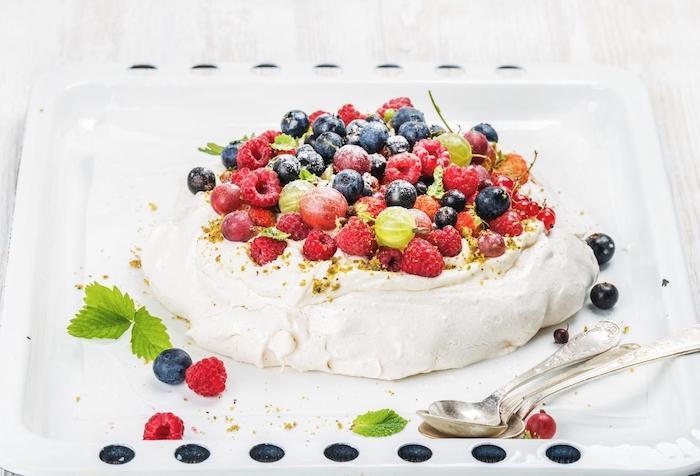Unlike other Christian holidays, Easter is a ‘movable feast’, or a religious holiday that is not on the same day every year. It occurs on the first Sunday following the Paschal Moon, which is the first full moon of spring occurring on or after the March equinox. The foods many associate with the Easter holiday, such as lamb, ham, and hot cross buns, hold tremendous symbolism.
The Oxford Companion to Food cites the significance of lamb in both Christianity and Paganism. In pagan times Easter did not exist, but a celebration of the spring equinox did. The lamb became symbolic of Jesus’ self-sacrifice as the ‘Lamb of God’ according to Christian theology. In America, cured ham was more available and easy to store than lamb, so early Christians adopted it for the Easter meal.
Hot cross buns are a Good Friday tradition, but the giving of small cakes and sharing of bread roots back to the Spring festival of the ancient Greeks. The Saxons ate buns in honor of the goddess of light, Eostre, of who the Easter season is said to be named.
While traditional fare will forever hold a place at the table, it’s nice to venture outside of convention from time to time. We look to bright flavors and cues from the season’s bounty for a non-traditional Easter dinner menu.
Colorful Crudité
Spring vegetables add color and crunch for snacking before the main course. Fresh carrots, radish, and snap peas provide a variety of flavors, while citrus cured olives and candied walnuts add a salty and sweet element. A roasted beet hummus or roasted carrot hummus will add color and texture to the plate. You can skip dying eggs will all this color or add a few around the edges for decor.
For a celebratory pairing, pop Champagne with crudité. Sauvignon Blanc, Chenin Blanc, and Vinho Verde are other varietals to explore.

Yes, Peas!
Starting the meal with soup is a fun alternative to salad. Early garden peas are sweetest when just picked, but cooking them helps bring out their sweetness, while mint adds freshness. This vibrant and creamy spring pea and mint soup recipe is equally delicious served warm or cold. The crisp flavors of an unoaked Chardonnay, particularly Burgundian Chablis, will balance nicely with this dish.

Spring Dishes
Our Easter menu forgoes the traditional ham, or lamb, in favor of salmon. Whether your preference is a simple baked salmon with lemon and herbs or a unique presentation of salmon and vegetables, this main dish pairs beautifully with a vegetable that reaches its prime in April, asparagus. Pinot Noir is a classic pairing with salmon, but full-bodied white wines such as Marsanne and White Burgundy can also be exciting duos.
Bring a trio of spring flavors to the table with this recipe of sauteed asparagus, morels, and green garlic. Try an Albariño from Rías Baixas on Spain’s Atlantic coast or an aromatic Grüner Veltliner from Austria with asparagus. One note about asparagus, it can be a very tricky food to pair with wine. The chlorophyll-driven green flavors are prone to clash with oaked or higher tannin wines.
Light As A Feather
Try a pavlova for a spring treat and sensory delight. A baked meringue topped with fresh berries, this dessert also offers versatility for wine pairings. If you’d like the Pavlova to shine, try pairing it with an airy and effervescent Moscato d’ Asti. Though Bordeaux has a longstanding tradition to discourage pairing Sauternes with the dessert course, this is one exception that allows the wine to shine. Naturally dominant with a sweet, rich, dense flavor profile, Sauternes shines when paired with this lighter meringue-based dessert.










